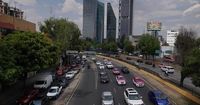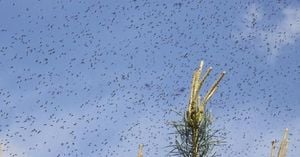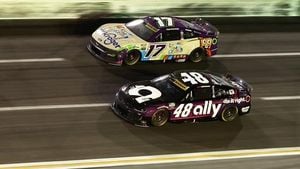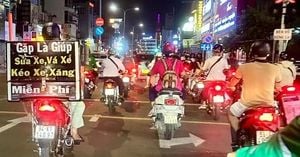On Sunday, June 1, 2025, residents of Mexico City (CDMX) and the State of Mexico (Edomex) enjoyed a rare break from the "Hoy No Circula" program, allowing all vehicles to circulate freely without restriction. This temporary pause, established by the Environmental Commission of the Megalopolis (CAMe), means that for one day, the usual vehicular limitations were lifted, providing some relief to drivers across the metropolitan area.
The "Hoy No Circula" program, a longstanding environmental initiative managed by the Secretariat of Environment of CDMX (SEDEMA) and supported by CAMe, aims to reduce air pollution by limiting the number of vehicles on the road based on their license plate numbers and emission holograms. Typically, these restrictions are enforced from 5:00 a.m. to 10:00 p.m., Monday through Saturday, across the 16 boroughs of Mexico City and 18 conurbated municipalities in the State of Mexico. The municipalities include Atizapán de Zaragoza, Coacalco de Berriozábal, Cuautitlán, Cuautitlán Izcalli, Chalco, Chicoloapan, Chimalhuacán, Ecatepec de Morelos, Huixquilucan, Ixtapaluca, La Paz, Naucalpan de Juárez, Nezahualcóyotl, Nicolás Romero, Tecámac, Tlalnepantla de Baz, Tultitlán, and Valle de Chalco.
While the program's restrictions apply six days a week, Sundays have been designated as a "rest day" for the program, meaning all vehicles—regardless of hologram or plate number—may travel without limitation. This Sunday reprieve is a welcome respite for many drivers, especially those who rely heavily on their vehicles for daily commuting or business activities.
However, the day before, Saturday, May 31, 2025, the "Hoy No Circula" program was in full effect with specific rules for vehicle circulation. On that day, vehicles bearing holograms 1 and 2 with license plates ending in an even number (2, 4, 6, 8, or 0) were restricted from circulating, as were foreign vehicles. This rule was enforced from 5:00 a.m. to 10:00 p.m. across the same geographic area.
Interestingly, because May 31 was the fifth Saturday of the month—a detail that affects the program's operation—vehicles with hologram 1 were exempt from the usual restriction. This exemption aligns with the alternating pattern for hologram 1 vehicles, which allows them to circulate every other Saturday depending on whether their license plate ends with an odd or even number. For May 31, being an odd-numbered Saturday, vehicles with hologram 1 and plates ending in an odd number were required to remain off the roads.
Vehicles with holograms 00 and 0, as well as electric and hybrid cars, were permitted to circulate freely, reflecting their lower emissions and environmental impact. Additionally, exceptions were made for vehicles used by people with disabilities (with proper identification), public transportation, antique or classic cars, construction and mining machinery, motorcycles, funeral service vehicles during active service, demonstration or transfer units, and vehicles with a valid Tourist Pass. These exceptions ensure that essential services and lower-polluting vehicles maintain mobility despite the restrictions.
Non-compliance with the program on Saturday could result in fines ranging from 20 to 30 times the Unidad de Medida y Actualización (UMA), which translates to between 2,074.80 and 3,112.20 pesos. Such penalties underscore the seriousness with which authorities enforce the program to improve air quality.
Despite six environmental contingencies already registered in the Valley of Mexico in 2025, authorities did not activate the "Doble Hoy No Circula" (double restriction) for May 31. This measure, which imposes stricter limitations during severe pollution episodes, remains a tool reserved for critical air quality situations. Nonetheless, officials anticipate up to 11 contingencies during the current environmental season, signaling ongoing challenges in managing urban air pollution.
Looking ahead, environmental authorities in the Valley of Mexico have announced potential changes to the "Hoy No Circula" program, although details and implementation dates remain pending. Proposed adjustments include expanding restrictions to vehicles older than six years, which studies suggest can emit up to 17 times more pollutants than newer models. Another potential change under consideration is the prohibition of motorcycle circulation during Phase 2 of environmental contingencies—a measure currently applied only to four-wheeled vehicles. This could significantly impact thousands of workers and delivery personnel who rely on motorcycles for their livelihoods.
Returning to the present, the temporary suspension of "Hoy No Circula" on Sunday, June 1, offered a brief but meaningful opportunity for all drivers to move freely throughout the metropolitan area. However, the program will resume on Monday, June 2, reinstating the usual restrictions aimed at curbing pollution and protecting public health.
In summary, the "Hoy No Circula" program remains a central component of Mexico City's environmental strategy, balancing the need to reduce harmful emissions with the practical realities of urban mobility. Its operation across Mexico City and the State of Mexico's municipalities reflects a coordinated effort to address air quality challenges in one of the world's largest metropolitan regions. While Sundays provide a welcome break, the program's ongoing evolution—including anticipated stricter measures—highlights the persistent urgency of combating pollution in this bustling urban landscape.




